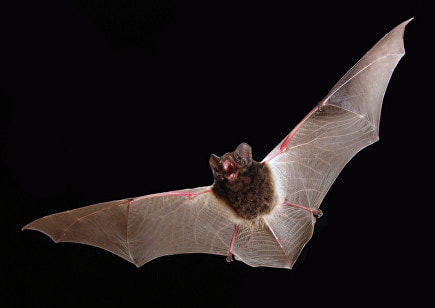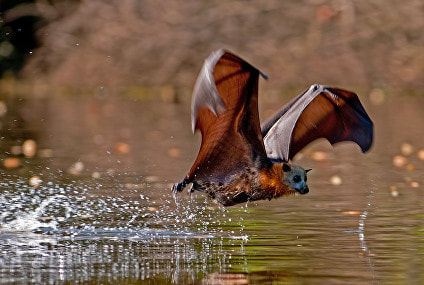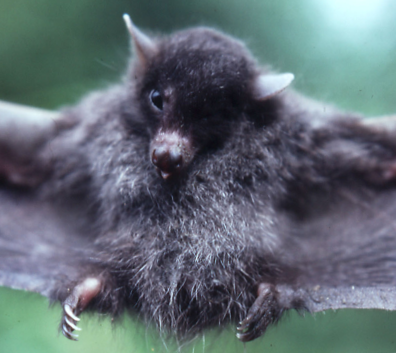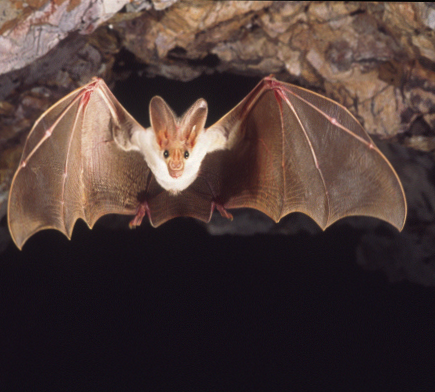Australasian Bats
Echolocating bats
|
There are many insect eating bats in Australasia, most are small (some are tiny!). The smallest insect eating bats in Australasia weigh about 3 grams! Insect eating bats belong to a group of bats called 'microbats' which find their way through the dark by using 'echolocation', listening to the echoes from their high pitched calls. These calls are usually well above the range of human hearing so we can't hear them, but some species like the White-striped Freetail Bat can be heard by humans.
They feed on a range of insects, including many pest species. They also can slow their bodies down and go into torpor to save energy when it is cold or when they're inactive during the day. They can live a very long time for such small animals, sometimes more than 30 years, but usually less than this. |
Fruit and nectar eating bats
|
Fruit and nectar eating bats belong to a group of bats called 'megabats' which generally don't use echolocation to navigate. These bats have large eyes and a good sense of smell that they use to find their food, fruits and nectar from flowering plants.
Some larger fruit and nectar eating bats are called 'flying foxes', because their faces look a little like a fox, but they are actually not very closely related to foxes at all. Some flying foxes can fly very long distances. For example, the Tongan flying fox has a huge range dotted across islands throughout the South Pacific. |
Unique habits of Australasian bats
|
There are many very interesting and unique habits of bats in Australasia. Here are just a few examples:
|





